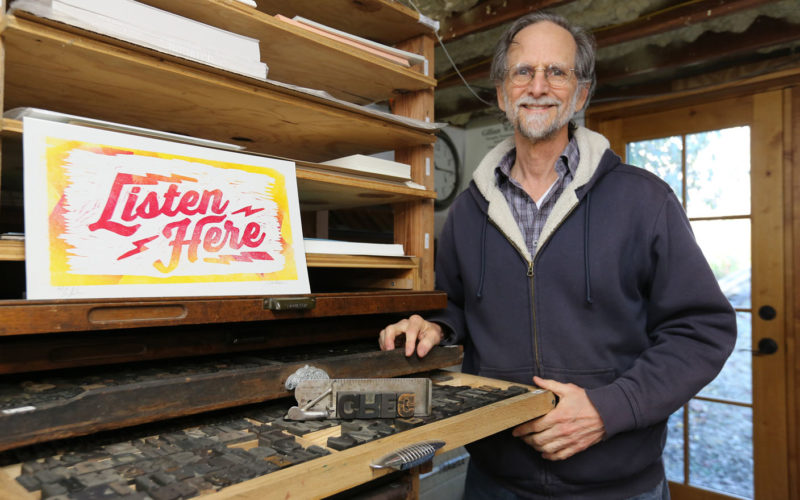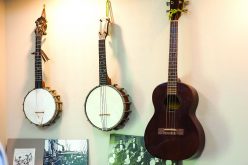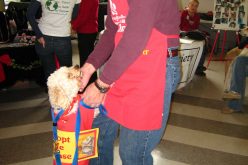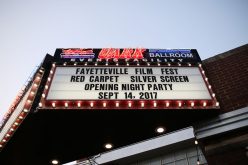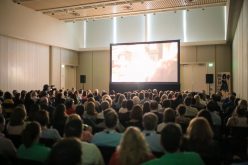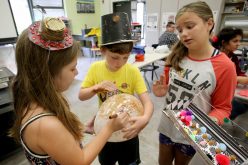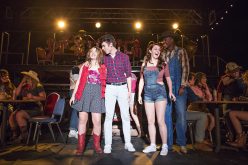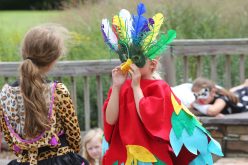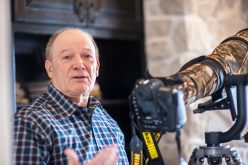LARA JO HIGHTOWER
lhightower@nwadg.com
Northwest Arkansas is a hotbed of artistic talent. Through a new feature — Makers Round-Up — we’re going to be shining a spotlight on the folks who make up the creative, diverse heart of the region’s art scene.
Macy Burr
Soundscapes
With artist Macy Burr’s Soundscapes, you can fill your walls with striking artistic visualizations of your favorite music. The first dance at your wedding, the song that was playing when you fell in love, the most popular song of your senior year in high school, that classical music piece you worked for months to master on the guitar: Burr’s brainy-and-beautiful work is a perfect tribute for that very special song in your (or a loved one’s) life.
Q: Please tell us a little bit about your work. What do you create?
A: Soundscape Studio is a one-woman design studio that creates data visualizations of music scores.
Q: When did you first start thinking of yourself as an artist/creator/maker? What were some of the first things you remember creating?
A: In college, I became obsessed with generative art, which is any work that stems from concentrating on the processes involved in producing an artwork, rather than the artwork itself. For my final project in art school, I explored patterns of gestural mark-making until portraits emerged, which set the stage for the later exploration of similar patterns in music.
Q: Where can we see/purchase your work?
A: My work is available on my website: www.soundscapeart.com and on Etsy at www.etsy.com/shop/soundscapestudio. Also locally at the Mustache Store, the Milk Carton and Handmade Market.
Q: Have there been any responses to your art that you found particularly moving or memorable?
A: I really enjoy it when I can see the same level of excitement in a 6-year-old as I can in a professional musician whenever they come across my work. I think that the sheer simplicity of the system really resonates with a wide range of people with various backgrounds, and just being able to watch someone’s face light up when they understand the system is my favorite part of this project.
Q: How has your work changed or evolved over time?
A: I have begun to implement more and more detail to make the work as musically accurate as possible. After my initial conception, I implemented a subsystem of hatch marks that represent sharps and flats, and I continue to seek solutions to new musical anomalies as I come across them in each new song.
Q: What are some other artists/creators that inspire you?
A: Largely inspired by John Cage, my work serves to re-imagine music visually by implementing a more expressive form of graphic music notation. I love the way Cage reaches outside the confines of traditional music and incorporates other elements to create something entirely new. In the same vein, I try to encourage people to connect musical tones with specific colors in order to add another dimension to their audio experience.
Q: If you could change one aspect of society through your work, what would it be?
A: My goal is to encourage those who see my work to embrace new perspectives about the way we communicate with one another. Music is the most universal language, and I want to challenge viewers of this project to open their minds to the many creative possibilities that are inherent in all languages.
Gregory Mitchell
“I am Here Cards”
Gregory Mitchell’s work at “I am Here Cards” keeps two art forms that have fallen out of favor alive: cartography and letter press printing. To create his exquisitely designed hand-drawn maps, he interviews locals to determine which landmarks are culturally important enough to include. When you hang one of his maps on your wall, you’re hanging up a little piece of home.
Q: Please tell us a little bit about your work. What do you create?
A: I am a cartographer and a letterpress printer — so I make maps and print them on vintage printing presses. Letterpress is relief printing where the area to be printed stands up above the background so it takes the ink from a roller or brayer, and then pressed onto a piece of paper — think of the old metal and wood type that you see in antique stores. This process gives letterpress its distinctive embossed texture — not something you can do with an inkjet! Letterpress been around since Gutenberg and up until 1970 or so it was just called “printing” — it’s how almost all books, newspapers, etc., were printed. First offset lithography and then computers have rendered letterpress obsolete, but interestingly, computers have also contributed to its renaissance; new technology allows us to digitize any black-and-white image and make a polymer printing plate out of it. That’s the most commonly used letterpress method today, and it’s how I print my maps.
I love the old ways — I have a nice collection of wood and metal type that I use for posters, etc. — but I’ve focused on making maps. I love the old tourist postcard maps — you know the ones I mean, with little cartoon drawings — but being a cartographer I also want to make accurate maps. So I combine the two. I start with an accurate map that I print off the computer, and then using a light pad, I trace over it on vellum, first in pencil and then in ink. Much of the work goes into researching what to put on the map, which includes questioning the locals. I ink several separate overlays — one for roads, one for rivers, one for text — to make it easier to edit and color on the computer. Then the ink drawings are scanned and combined using a paint program — I use Paintshop Pro. There I add color and also get a chance to correct small errors, adjust word placement and spacing, etc. At this point I may develop two versions — one stays in black-and-white for letterpress, the other color for digital display and printing.
Today I have maps of all the cities in Northwest Arkansas and Little Rock, and 28 states, including, of course, Arkansas. I work out of two shops: one at home on Sutton Street in Fayetteville, the other at the Ozark Mountain Smokehouse that Frank Sharp generously allows me to use.
Q: When did you first start thinking of yourself as an artist/creator/maker? What were some of the first things you remember creating?
A: I made and sold rustic “stick” furniture for many years; it was during that time in the ’90s that I felt accepted into the Fayetteville arts community and started to think of myself as an artist — or at least an “artistic craftsman”! I love the craft equally to the art and take no offense at being called a craftsman. My first memory of creating something was in kindergarten where there was a wood shop for kids. I remember assembling the parts of a paddle-wheel river boat and pounding in nails all around the edge as a railing … I think that’s when I started to want to be a “Maker.”
Q: Where can we see/purchase your work?
A: In Fayetteville at Shindig Paperie, Handmade Market and the Fayetteville Visitors’ Center; in Springdale at Perrodin Supply; in Rogers at Dandyroll and The Gathering; in Bentonville at In Season; and in Little Rock at Green Corner Store, Bella Vita Jewelry and The Gallery at Library Square. Also at iamherecards.com and Etsy@iamherecards.
Q: As a writer, I sometimes experience writer’s block. Do you experience “creator’s block” and, if so, what kinds of things inspire you to get over that?
A: I suppose I’m lucky on this one: I’ve set a goal of mapping each of the 50 states, so I have plenty to do! I’m on state number 28 right now. It can still be hard to sit down and start a new state, but once I do I find that I always get excited about learning about a new place, even if I am only a virtual tourist! I’ve been to every state except Hawaii and lived in six, so that helps, but there’s always much to learn.
Q: Have there been any responses to your art that you found particularly moving or memorable?
A: My grand-nephew is 10 and wants to be a cartographer when he grows up!
Q: How has your work changed or evolved over time?
A: My mapping approach has gone in a circle: during my working days I always worked in full color, on a computer. When I started with pen-and-ink and letterpress I worked only in black and white, with an occasional dash of color for a title. But the pull of the cartography was too strong — I love the flexibility, legibility and snap that color gives, so I now have two versions of many maps — a letterpress version in black-and-white and a digitally printed version in full color.
Q: What is one tool in your studio you can’t live without?
A: That’s a tough one! I LOVE the old printing equipment. I work on three presses, built circa 1890, 1926 and 1935. It is amazing that they all still work as designed with regular oiling and new rubber rollers every decade or so. But I’d have to say I love the wooden type the best. You’ve seen them — those big wooden letter you see in displays and antique stores. Every print shop used to have them for making posters and big advertising signs. They come from less than an inch tall up to 5 inches, 12 inches, or more. They are usually made of end-grain hard maple, polished to a mirror finish, and machined to be .918 inches tall — the standard “type high” dimension for all wood and metal type. Unless they’ve been left out in the rain (or glued into a picture frame!), most of the old type is still usable — and beautiful! The patina, the dings, the muted colors of the wood added to layers of ink residue make each one an art piece in itself. Which in a way is a shame since many fonts have been broken up to sell on eBay and will never be printed again, but at least nobody throws them away!
Q: What is the best piece of advice you’ve ever been given?
A: The only advice I can ever remember being given by my dad: Don’t use heroin. Good advice; I’ve followed it.
Q: If you could change one aspect of society through your work, what would it be?
A: To help all of us appreciate others. My belief is that maps enable us to see other places through a different lens, that they help us see that while other places are different and unique, they all have goodness and strength. If a northerner can see that they actually have art museums in Arkansas, if an Arkansan can see that California is more than just L.A., then that is a small step toward listening to each other with respect.

